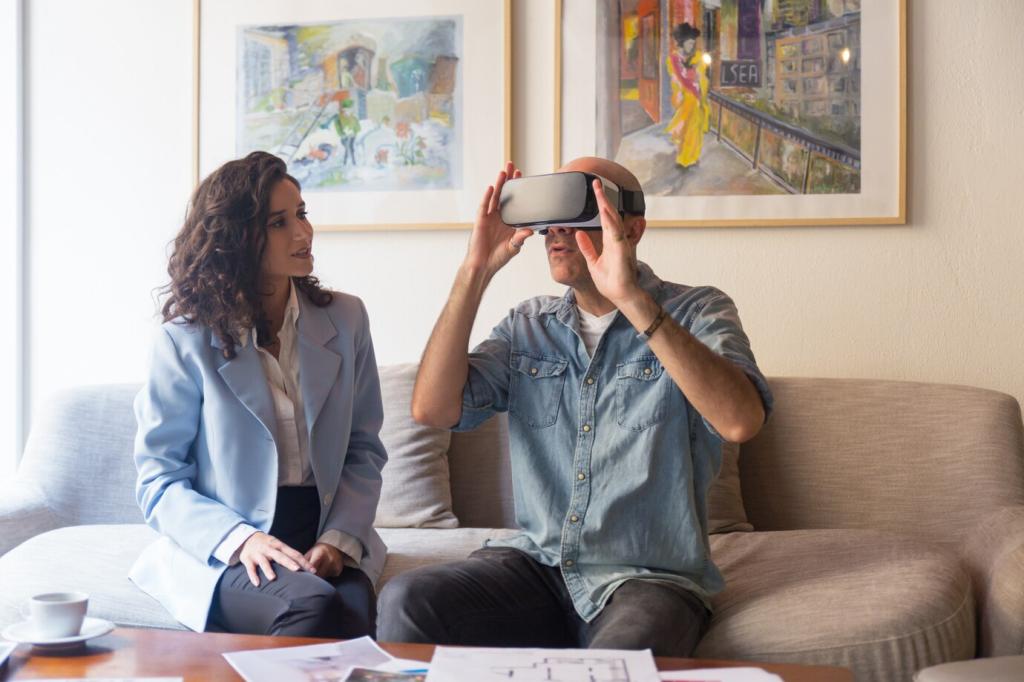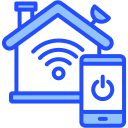Key Innovations in Smart Home Technology
The landscape of smart home technology is continuously evolving, introducing new levels of convenience, security, and energy efficiency into our daily lives. From intelligent devices that anticipate our needs to seamless integrations that offer unified home control, these innovations are reshaping how we experience and interact with our living spaces. This page explores some of the key advancements driving smarter, more connected homes and details the technologies making the biggest impact today.

Voice-Activated Home Control
Evolving Smart Speakers
Smart speakers have become the central hub for voice-activated home management. Over time, these devices have developed far beyond simple music playback, now supporting a broad ecosystem of compatible devices. Integration with major platforms allows residents to orchestrate routines involving multiple gadgets, such as dimming lights for movie night or arming the security system at bedtime. Their ability to recognize different voices means they can personalize commands or respond to specific household members, enhancing both convenience and security. The continual improvement of microphones and sound recognition ensures reliable performance, even in noisy environments or from across the room.

Advanced Home Security Systems
AI-Powered Surveillance Cameras
Modern surveillance cameras employ artificial intelligence to distinguish between routine activities and suspicious behavior. These smart cameras can identify people, animals, moving vehicles, and even package deliveries, reducing false alarms and increasing situational awareness. Facial recognition and object detection technologies alert homeowners only when necessary, freeing them from constant, unnecessary notifications. Additionally, cloud-connected systems enable remote access, letting users monitor live footage, review recorded events, and interact with visitors from anywhere in the world—all with robust encryption and privacy safeguards in place.
Connected Access Controls
Smart locks and access controls redefine how residents manage who enters their homes. Offering features such as biometric entry, digital keys, and temporary codes, these systems enable flexible, secure access for family members, guests, or service providers. With integration into the broader smart home system, locks can trigger automatons like activating lights or disarming security upon entry. Mobile apps provide real-time entry logs and remote control, so users can let someone in even when they’re not physically present. The combination of convenience, detailed tracking, and high-level security has significantly reduced reliance on traditional keys.
Real-Time Security Alerts and Automation
One of the most profound developments in home security is the ability to generate real-time alerts and automate responses based on detected threats. Sensors for doors, windows, motion, and environmental hazards integrate with central hubs to deliver instant push notifications, email alerts, or siren activations when triggered. These systems can be programmed to take protective measures automatically, such as locking doors, turning on exterior lights, or contacting emergency services. Through geofencing and scheduling, the home can adjust security levels based on the owner’s location or routine, allowing for dynamic, intelligent protection tailored to individual needs.
Energy Management and Sustainability
Intelligent Thermostats and Climate Control
Intelligent thermostats learn household routines and adjust heating and cooling for optimal comfort and energy savings. These devices monitor occupancy, weather forecasts, and even local utility rates to fine-tune temperature settings throughout the day. Integration with remote sensors ensures balanced climates across different rooms, further eliminating wasted energy. Users can control their systems remotely, set schedules, or rely entirely on the automation provided, which results in significant reductions in energy consumption—and lower utility bills—without sacrificing convenience or comfort.
Smart Lighting Solutions
Advancements in smart lighting include adaptive brightness, color temperature adjustments, and automated scheduling. Lights respond to natural daylight, presence, or time of day, ensuring that rooms are illuminated only when necessary and at the most comfortable levels for any activity. Residents can manage lighting remotely, create personalized scenes, or synchronize lights with voice assistants or other smart devices. The widespread use of LED technology in these systems not only lowers electricity consumption but also extends bulb life, further contributing to sustainability and reduced maintenance costs.
Energy Monitoring and Analytics
Modern smart homes leverage energy monitoring devices and dashboards to provide real-time insights into household consumption. These analytics platforms break down energy use by device or area, helping residents identify inefficiencies or areas for improvement. By tracking data over time, homeowners can measure the impact of their behaviors or automation settings and receive tailored recommendations for further savings. The result is a proactive approach to sustainability, allowing households to make informed decisions and maximize the ecological impact of their technology investments.

